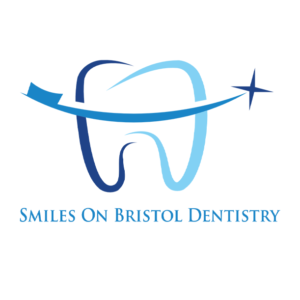Dentists have a number of possible degrees and qualifications which can make picking the right one difficult, says Dr. Danial Kalantari, Santa Ana dentist of Smiles on Bristol Dentistry. To help you figure out what dental professional you need, we have gone over the most common types and what the differences between them are.
The most important thing to first consider when looking for a dentist is to make sure the dentist is accredited and licensed to practice. While unlicensed dentists are very rare, they do still exist and often target poorer income patients who have few options. All 50 states have license records available on their respective sites through online search functions. The license information will also provide information about whether they have had any disciplinary action or official complaints filed against them. However, almost all states will allow dentists to practice in their state for up to 5 years with proof of an official license from somewhere else. If you are having difficulty finding a license for your dentist in your state, they may have a license from another state. Feel free to call your dentist if you have concerns and get their appropriate license information.
Most people only ever need to see a general dentist. General dentists are the professionals who oversee regular checkups, perform fillings, can do simple extractions, and provide initial diagnoses and recommendations for patient conditions. To become a general dentist, students must achieve either a Doctor of Dental Surgery (DDS) or Doctor of Dental Medicine (DDM) degree. Unlike most doctorates, dentists do not need to get a master’s before getting their doctoral degree. Most go directly from undergraduate studies to dental school where they work on their doctorate. DDS degrees and DDM degrees mean the same thing. One is not better than the other, so consumers looking for a generalist should feel comfortable hiring a dentist with either qualification. The distinction between the degrees arose simply because Harvard started offering a dental doctorate but only awards degrees under the Latin names. The Latin version of Doctor of Dental Surgery was a bit long and convoluted, so they settled on the more simple “Dentariae Medicinae Doctor” or DMD. The American Dental Association (ADA) confirms that DDS and DMD degrees are interchangeable.
Some dental practices require greater certifications beyond the standard DDS or DMD. According to the ADA there are currently 9 recognized dental specialties: Pediatrics, Endodontics, Dental Public Health, Prosthodontics, Periodontics, Oral and Maxillofacial Radiology, Oral and Maxillofacial Pathology, Oral and Maxillofacial Surgery, and Orthodontics and Dentofacial Orthopedics.
Pediatric specialties train dentists on how to work specifically with children, who tend to have differing physical and mental needs than adult patients. These specialists have the training to be able to accurately treat infants to adults. For parents with children who are having issues with primary teeth and the transition to adult teeth, these are the dentists to contact. These dentists also receive training on how best to interact with younger patients. Due to all the sights, sounds, and possible discomfort, many children develop a fear of the dentist. Pediatric specialists have specialized training in making the dentist office a kid friendly place. They also are better trained with how to deal with uncooperative children in a friendly, patient manner.
Endodontics covers special training on the internal structures of teeth, particularly the tooth pulp, which is the living tissue part of the tooth. It also deals with the support structures that interact with the pulp such as the connected bone and the connective gum tissue. The doctors handle procedures particular to these structures and are better suited to making specific diagnoses and treatment plans in regards to issues in these areas.
The dental public health specialty focuses on community dental health rather than individual treatment. Much like CDC doctors work to monitor, prevent, and treat widespread diseases, dental public health specialists keep track of dental diseases among the population and develop community-wide efforts to improve dental health.
Prosthodontics is the field covering oral prosthetics. This includes any bridges, implants, dentures, etc. which are used to replace missing teeth. Oral prosthetics are used both cosmetically, to enhance the appearance of a smile, and functionally to help people be able to eat properly again.
Periodontics covers the gums foremost. Technically it covers any of the outside supporting structures that help keep the teeth in place. Periodontal specialists have greater knowledge of the diseases and treatments for these soft tissues and can offer better preventative measures and information for high-risk patients.
For dentists that want to take and better understand radiographs such as x-rays, they can specialize in Oral and Maxillofacial Radiology. This helps them to make better diagnoses and can safely utilize x-rays to examine not just the mouth, but the head and neck.
As pathology is the study of causes and effects of diseases, Oral and Maxillofacial Pathology is the study of diseases relating to the mouth, head, and neck. Pathologists work to identify the various diseases and figure out where they come from and what effects they cause. This research is highly important in developing effective treatment options for conditions affecting the mouth and maxillofacial regions.
Oral and Maxillofacial Surgeons receive special training on more advanced surgeries. For most surgeries beyond simple extractions, a general dentist will refer their patients to oral and maxillofacial surgeons. They are trained to work with both the hard and soft tissues of the mouth.
Orthodontics and Dentofacial Orthopedics work on the alignment of the bone and tooth structures. They study how the bones and teeth are supposed to be arranged for optimum health. By straightening crooked teeth and reducing crowding, teeth are less likely to trap as much food particles becoming less susceptible to decay. Teeth at improper angles can also hit their roots against the roots of other teeth and become damaged. Orthodontic work also treats issues such as under bites and overbites.


